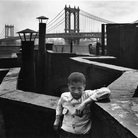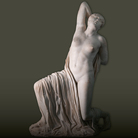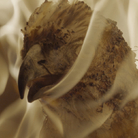Other Home

Enkhbold Togmidshiirev, Unen Enkh, Other Home, 2015. La Biennale di Venezia, Padiglione Mongolia
Dal 9 May 2015 al 22 November 2015
Venezia
Luogo: Biennale Palazzo Mora / Pad. Mongolia
Indirizzo: Strada Nuova, 3659 Venezia
Curatori: Uranchimeg Tsultemin
Sito ufficiale: http://mongolia-pavilion-venice-biennale.com
COMMENTI

-
 Dal 2 December 2025 al 19 February 2026
Milano | Centro Culturale di Milano
Dal 2 December 2025 al 19 February 2026
Milano | Centro Culturale di Milano
Walter Rosenblum. Il mondo e la tenerezza
-
 Dal 30 November 2025 al 12 April 2026
Gallarate | Museo MA*GA
Dal 30 November 2025 al 12 April 2026
Gallarate | Museo MA*GA
Kandinsky e l’Italia
-
 Dal 29 November 2025 al 12 April 2026
Roma | Musei Capitolini
Dal 29 November 2025 al 12 April 2026
Roma | Musei Capitolini
La Grecia a Roma
-
 Dal 22 November 2025 al 3 May 2026
Torino | Sale Chiablese dei Musei Reali
Dal 22 November 2025 al 3 May 2026
Torino | Sale Chiablese dei Musei Reali
Orazio Gentileschi. Un pittore in viaggio
-
 Dal 20 November 2025 al 25 January 2026
Firenze | Palazzo Strozzi
Dal 20 November 2025 al 25 January 2026
Firenze | Palazzo Strozzi
Andro Eradze. Bones of Tomorrow
-
 Dal 21 November 2025 al 28 March 2026
Cuneo | Complesso Monumentale di San Francesco
Dal 21 November 2025 al 28 March 2026
Cuneo | Complesso Monumentale di San Francesco
La Galleria Borghese. Da Raffaello a Bernini. Storia di una collezione


